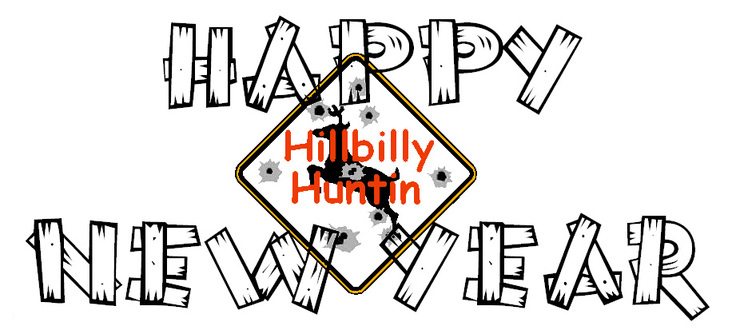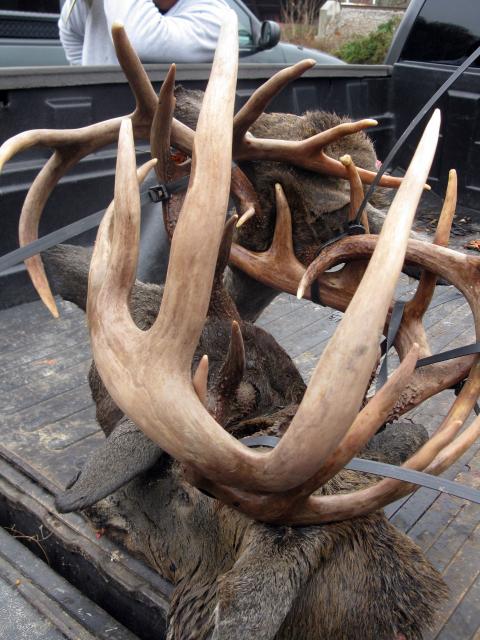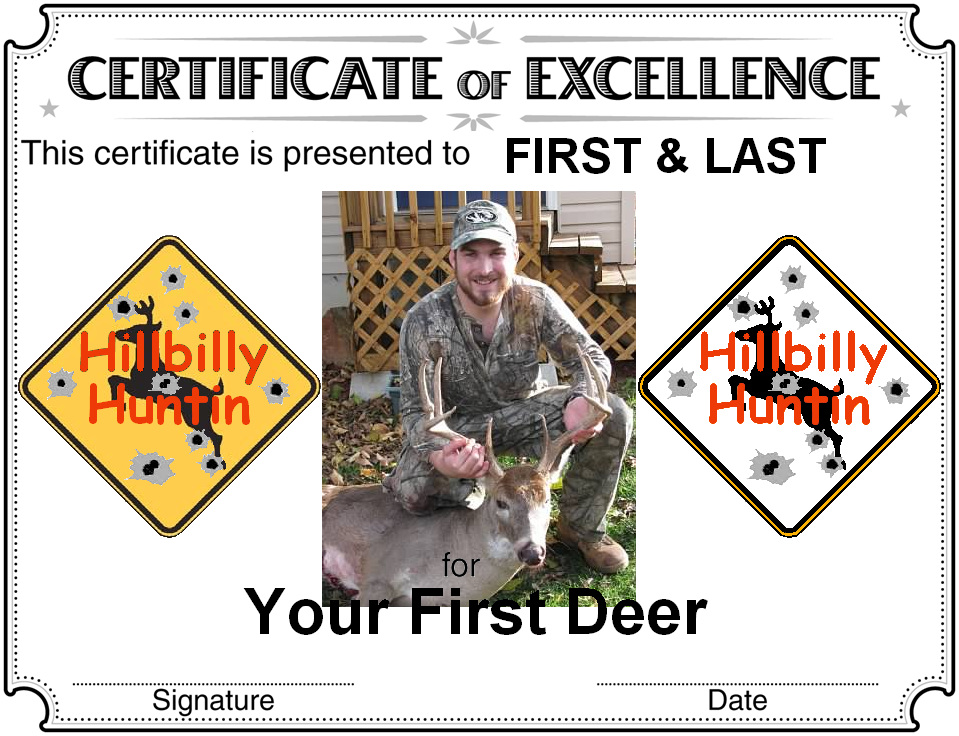Remember, four boxes keep us free:
|
How to hunt the rutDuring the rut you’re not so much trying to hunt the bucks as you are trying to put yourself in an area where there are the most does. By sitting on a rub line you’re hoping the buck has bred a doe and is heading to bed or heading from bed to search for more does. If your hunting scrapes your hoping the buck that made it isn’t with a doe or has already bred and trying to find out what is in the area.
Hunting the does and travel corridors is hoping you get a buck trailing a doe or that has found one and is staying with her until she is ready to breed or searching for doe using common travel routes that does use. By sitting up in a travel corridor or rout you’re going to see more attention and your efforts of calling and scent will be put to better use. If you think like a buck what would you do? If I’m looking for a doe I’m going to be where they are if I’m not with them I’m going to be trying to find them by traveling the same trails they do. Just my thoughts on how to hunt the rut and weighing the options on why I think it works. Velvet antlers What are velvet antlers? Whitetails have antlers not horns! Antlers are grown by members or the cervidae family, horns are grown by cattle, bison, sheep, goats and other animals that do not lose and re grow their head gear every year.
The difference is antlers are made of bone and shed every year; horns are made of keratin and grow through the animal’s entire life. The process of antler growth is 128 day process primarily caused by change in testosterone levels. The pineal gland causes the change in testosterone levels and is caused by change in day light hours or photo- period. The longer daylight the faster the growth occurs. The same gland and shortening of day light causes them to stop growing harden and shedding occurs. Velvet is a skin with tiny hairs and the skin is filled with blood vessels and the antlers can grow up to ½ an inch a day at peek growing time. What goes into play when growing antlers? Stress, age, genetics, and the nutrition’s they need come from food. Nutrition’s from their own bones is used during the growing process. The minerals are taken from places in the bone structure then when the growing is done the body replenishes what is lost and it returns to normal. The blood stops flowing to the velvet the bone hardens then the velvet dries and cracks becoming very itchy and the bucks want to remove it that’s why they rub. That’s what velvet antlers are and it’s crazy what their bodies go through every year to grow them. There bones have very little minerals and nutrition going to them so an injury during the process will affect the healing process and antler growth. Shed hunting. It’s that time again lets go look for sheds! Hunting for sheds is a great family event unlike most other hunting trips you don’t have to worry about stealth and not making a noise. You’re not going to scare off a shed! Shed hunting is mostly luck but your odds increase if you use your knowledge of deer habits to your advantage. The more ground you cover the better odds of finding sheds will be. Look on the edges of fields and on brush lines since deer spend more time in and walking these areas. Follow well used deer trails and look near and around bedding areas. If you find one shed look very well nearby because bucks can feel off balance and will rub trees trying to lose the other antler. I’m not saying it will be there but it’s worth a shot.
This is another way to teach new and young hunters about deer habits since everything will be fairly open it’s a good time to teach about rubs, rub lines, and bedding areas. Bring others into the outdoors if they aren’t into hunting but enjoy the outdoors take them to the woods and just walk. Try and walk funnels and travel corridors everywhere commonly traveled by deer. The person your with will be walking enjoying nature and you will be shed hunting. Look for white lines and gaze the ground looking for anything that doesn’t look right or out of place. Good luck finding sheds when you do find them send a picture and share it. The picture will be posted on the sheds page under pictures. Is it really the off season?So it’s the off season but is it really? Right now is the best time to find that monsters home without screwing up your hunt. Head out to the woods and scout the rub lines hard follow a rub line and try and find his home when you find his home try and find a spot that you can set up your tree stand or ground blind were you can see his rub line going into and out of his core area. After you have got an idea of where your stand will be next year the fun starts.
Start walking well used trails keeping your eyes on the ground looking for sheds the rub lines are a great place to start even though the bucks aren’t rubbing they are still walking the rub lines because they are normally on safe travel routes and funnels. Keep notes of where you find the sheds for next season. Feeding areas are another area to look along with bedding areas because that is where they spend the most time. Scouting the core area of a mature buck now gives you a head start for next year by already knowing were that monster is coming out and in. it keeps you from having to disturb his home closer to season. Finding rub lines you didn’t know about now is always a bonus since he will probably use the same one next year or close to it. Next year all you have to do is make sure the rub line is active and you know where it leads and he’s still in the area. So it’s not really the off season the foot work is just starting and there’s lots of it to come. Make sure you have goods boots because you’re going to put miles on them if you want the deck stacked in your favor this year. What makes a trophy buck?What do you consider a trophy buck? Does he have to make it in a record book? Does he have to be bigger than any other buck you have taken? A trophy to me is a buck that I have worked for, a buck you have scouted patterned spent countless hours trying to figure out where and how to hunt him, or a buck you missed the year before that you have seen him grow from year to year. You find his sheds and you have a story to go along with him. The hunt that you thought was busted from the time you walked into the woods because your plan fell through and you had to use your knowledge to pick another spot or the buck you hunted sitting in your stand in the heat, cold, rain, and wind but you still got him. That is a trophy no matter the size or even the sex of the deer. Keep that in mind as you take young hunters into the woods the work you put into your deer will make it the trophy of your dreams.
A trophy is whatever you decide and being able to share the story and have the memories for a life time and just as important as the size of the rack or the sex of the deer. What is a trophy to you? What makes a hunt successful?What makes a hunt successful? Is it shooting a monster? Shooting a buck? Putting meat in the freezer? Seeing a deer and choosing not to shoot it? Every hunter has their own version of a successful hunt. From year to year your version may change depending on the circumstances. No one can tell you what should be a successful hunt for you that’s for you to decide no one can do it for you. For me and the members of our deer camp we consider it to be a successful hunt if we see a deer and choose not to shoot it. That’s what makes it a successful hunt to us having the opportunity to harvest a deer and choosing to pass is as good as shooting one. If we learn something from the season every year we use what we learn to figure out our mistakes and try and figure out how to change it and never do it again. That’s what it takes for us to have a successful hunt learning something and having the opportunity to harvest a deer. Evaluate what makes it a successful hunt to you and whatever it is try and make every hunt successful. Put the cards in your favor to make it successful. Getting someone else into hunting will make a UN successful hunt feel successful because you have now kept the traditions alive by passing on your hunting knowledge and love for the outdoors. Seeing the excitement in someone’s eyes as they find their first rub and watching them as they try so hard to do everything you teach them is an experience that cannot be described. My thoughts are this you don’t have to put a monster on the wall to feel successful being in the outdoors enjoying the gifts of god and passing on the traditions and love for the outdoors and hunting are enough to make any hunt successful. Enjoy the time you have with you hunting friends and the stories they tell you never know when it will be your last chance to pursue the amazing creatures we hunt. Rubs part 3You will find larger rubs when you get into a bucks core area. These rubs are there for him to keep track of bucks that move in his home. Other mature bucks will come in and work his rubs to try and test the waters and see how far they can go before being ran off. Just because you see a small buck works a rub that doesn’t mean a monster won’t be on his way.
Sing post rubs are worked year after year by bucks and does much like a scrape. The difference is they are used throughout the season not like scrapes that have a very hot time then cold. Scrapes are used for a breeding purpose sign post rubs are bill boards that bucks and does both use. Early bow season is a good time to kill a buck traveling a rub line there movement is fairly predictable and they are possibly still in bachelor groups so you can’t rule out seeing three or four bucks traveling together during early bow season. The bucks are most likely in there summer pattern and have had very little to know pressure and wont spook as easy. Pre-rut rub line hunting is the best time to be sitting on an active rub line. 10 days or so before the first does go into estrus is the best time during the pre-rut to hunt a rub line. This is because they are working the rub line heavy at this point trying to put their ad out that they are in the area. Finding scrapes on the rub line at this point makes the line that much better and you know he will be walking the line often. Staging areas Staging areas are places that a buck will wait before entering a feeding area if he arrives early. A mature buck isn’t often seen out feeding in a field in the middle of the day or even early evening. This is because he has learned to put the cards in his favor and wait to feed until right before dark. This doesn’t mean he isn’t nearby it just means he’s not going to be out in the middle of the field. A common staging area will have clusters of rubs in small vicinity or just a few trees close together that he works often to strengthen his neck and let other deer know he feeds there. After working the staging area he may walk to the edge of the field or walk just inside the wood line surveying the field looking, listening, and smelling the air for danger. There will normally be a rub line leading to the feeding area and near the staging area.
To hunt a staging area you can put a tree stand a comfortable shooting distance from the area and between the rub line and staging area if they aren’t right by each other. The further into the woods you are the sooner and better light you should have when he shows up. For a morning hunt when he is leaving the feeding area you can still hunt the staging area because he most likely will revisit it to see what other bucks have been by. A staging area isn’t just a single buck many bucks could be using the same staging area and you can possibly see some sparing going on in these areas or on the nearby edge. The intense fighting most likely won’t be in this area but you never know. Getting to know Rubs!Most hunters know what a rub is and when they see it they can call it out. But do you know the purpose of a rub and that they are different rubs? Everyone thinks that you have to have fresh rubs to be successful or they forget about the rubs and look for scrapes then hunt over them.
Bucks will visit old rubs from years prior and rubs that are from other bucks. The purpose of a rub is a signal to other bucks and does they are like bill boards different bucks will go through the same routine on the same rub and they do this to put there scent all over it. Other bucks will smell it and do the same thing. Much like a male dog peeing on everything he wants other dogs to know he is in the area. Bucks in velvet will travel what’s called a rub line even before they start rubbing to get the velvet off. They travel these rub lines because they were put there for a reason safe travel route to food and bedding. During early bow season bachelor groups will be traveling together and you guessed it using rub lines. Seeing three or four bucks traveling together down a rub line isn’t out of the realm of possibilities. Remember your first deerIf you or someone you know goes hunting this year and it’s their first deer send me a picture and there name and I will make a certificate for them to remember their first deer. Here is an example of what it will look like.
New Season It’s January and it’s never too early to start preparing for next season, reflect back on last, and figure out what you need to change to be successful. Wash your clothes in scent free soap and put them away after you spray them down with scent eliminator. When you put them away use anything that will keep air and scent away from the clothes.
Your gear you need to clean it and replace or fix anything you lost, used, or broke. Make notes of what worked with your gear and what didn’t now so its fresh on your mind and you can fix it or do it again next year. Your rifle give it a good cleaning and if anything was wrong with it this year get it fixed now so you don’t forget when you pull it out next year. You don’t want the same problems year in and year out because you forget that you wanted to change something. Wright down what you saw and about this season all your observations like weather feeding patterns stand sites deer movement. You can use that next year and years after. Now think about what you want to change next year everything from places you want to scout, how you want camp to be different next year and everything you learned during this seasons hunts. That can be useful in years to come if you keep good notes and keep track of it. Have a plan and follow it so that your hunts remain or become successful, learn from your mistakes and let’s put some meat in the freezer and one on the wall this year. |








